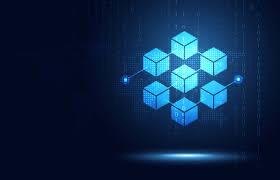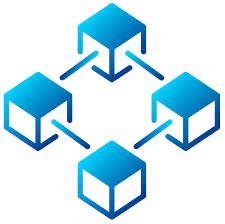Blockchain is a process for keep data such that makes it troublesome or difficult to change, hack, or cheat the framework.

Table of Contents
Defination of a blockchain.
A blockchain is basically an advanced record of exchanges that is copied and conveyed across the whole organization of PC frameworks on the blockchain. Each block in the chain contains various exchanges, and each time another exchange happens on the blockchain, a record of that exchange is added to each member’s record. The decentralized information base oversaw by different members is known as Distributed Ledger Technology (DLT).
Blockchain is a kind of DLT where exchanges are recorded with a changeless cryptographic mark called a hash.

A blockchain is a conveyed information base that is divided between the hubs of a computer organization.
As a database, a blockchain stores data electronically in computerized design. Blockchains are most popular for their critical job in digital currency frameworks, like Bitcoin, for keeping a solid and decentralized record of exchanges. The development with a blockchain is that it ensures the devotion and security of a record of information and creates trust without the requirement for a confided in outsider.
How does blockchain work?.

Blockchain comprises of three significant ideas: blocks, nodes and miners.
Blocks.
Each chain comprises of numerous blocks and each block has three essential components:
The information in the block.
A 32-bit entire number called a nonce. The nonce is haphazardly produced when a block is made, which then, at that point, creates a block header hash.
The hash is a 256-bit number married to the nonce. It should begin with an immense number of zeroes (i.e., be tiny).
At the point when the primary block of a chain is made, a nonce creates the cryptographic hash. The information in the block is thought of as marked and always attached to the nonce and hash except if it is mined.
Miners.
Miners make new blocks on the chain through an interaction called mining.
In a blockchain each block has its own novel nonce and hash, yet additionally references the hash of the past block in the chain, so mining a block is difficult, particularly on large chains.

Miners utilize extraordinary programming to tackle the staggeringly perplexing numerical statement of finding a nonce that produces an acknowledged hash. Since the nonce is just 32 bits and the hash is 256, there are about four billion potential nonce-hash blends that should be mined before the right one is found. At the point when that happens diggers are said to have seen as the “brilliant nonce” and their block is added to the chain.
When a block is successfully mined, the change is accepted by all of the nodes on the network and the miner is rewarded financially.
Nodes.
Quite possibly the main idea in blockchain innovation is decentralization. No computer or association can claim the chain. All things considered, it is a disseminated record by means of the hubs associated with the chain. Nodes can be any sort of electronic gadget that keeps up with duplicates of the blockchain and keeps the organization working.

Each node has its own duplicate of the blockchain and the organization must algorithmically support any recently dug block for the chain to be refreshed, trusted and checked. Since blockchains are straightforward, each activity in the record can be handily checked and seen. Every member is given a remarkable alphanumeric distinguishing proof number that shows their exchanges.

Consolidating public data with an arrangement of balanced governance helps the blockchain keep up with honesty and makes trust among clients. Basically, blockchains can be considered the versatility of trust by means of innovation.
What is a blockchain used for?.
Blockchains can be used for anything which expects exchanges to be kept in a safe way. This includes:

- Verifying and tracking ownership of intellectual property rights, from recording and tracking royalties for musicians to photos.
- Following products as they go through a store chain from maker to merchant to purchaser, from food to jewels.
- Storing government records, for example, marriage testaments, business enrollments, wellbeing records and considerably more.
- Other applications include enabling smart contracts, tracking patient records, digital authentication and signature systems, patent systems, distribution of locally produced energy, greater transparency in charities, frictionless real-estate transfers, and much much more…
What are the advantages and disadvantages of blockchain?.

Network distribution.
This point gives, simultaneously, a few advantages since, by having this organization circulated, in the principal example, nobody possesses the organization, permitting various clients to constantly have numerous duplicates of a similar data.Also, this trademark makes it safe and versatile to a disappointment since the way that a hub falls flat doesn’t suggest summed up disappointments in the organization.
Decentralization.

This is the principal element of blockchain innovation, and the solid point is that to confirm exchanges or tasks no other case is expected to go about as a middle person, diminishing exchange approval times.
Low costs for users.
The decentralized idea of Blockchain, takes into account the approval of one individual to the next exchanges rapidly and safely. Dispensing with the requirement for a middle person lessens costs for clients.
Advantages of blockchain.
Inefficiency.

It is wasteful to have a few organization clients approving similar tasks, since only one will get the prize gotten from this mining system. This interaction, and for similar explanation of numerous clients doing likewise, likewise infers a colossal hopeless cause, not harmless to the ecosystem innovation.
High implementation costs.
Just as this technology represents low costs for users, unfortunately, it also implies high implementation costs for companies, which delays its mass adoption and implementation.
Storage.

As the quantity of clients develops, the quantity of activities that will be incorporated into the blocks to be put away will likewise develop, so the space required will likewise need to increment inside the miners computers, at last surpassing the limit of the hard plates.
Private keys.

Extreme security can likewise be an Achilles heel, on account of private keys, as has been reported on many events, having lost them it turns out to be exceedingly difficult to recuperate these keys, causing an issue, principally, for that multitude of holders of cryptographic qualities.
Unemployment.
The absence of need for middle people will cause that, as Blockchain innovation is embraced and carried out, this large number of intermediation areas for the approval of installments and cycles will essentially be decreased with the eventual result of vanishing and, with it, the positions expected for it will vanish.
Conclusion on Blockchain.

Blockchain innovation is progressive. It will simplify life and more secure, altering how individual data is put away and how exchanges for good and administrations are made. Blockchain innovation makes an extremely durable and changeless record of each and every exchange. This invulnerable computerized record makes extortion, hacking, information robbery, and data misfortune unimaginable.